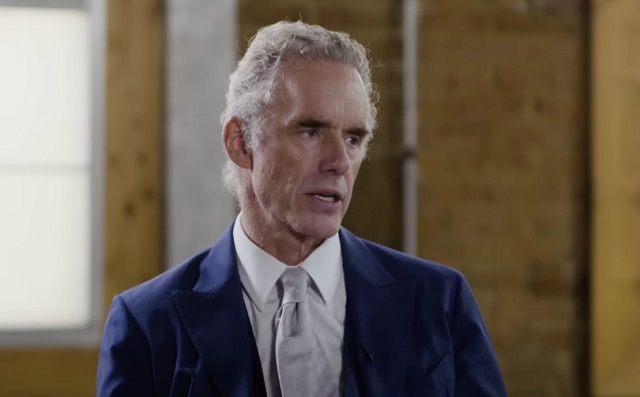DEI
WEF report suggests digital ‘metaverse identity’ will become central to daily life

From LifeSiteNews
Your digital identity will be your passport in the metaverse, where it will be used to surveil, predict, and mimic your behavior while determining your level of access to information and spaces.
Your metaverse identity, with its digital ID, biometric data capture, and behavior profiling, will be central to your everyday life, according to a World Economic Forum (WEF) report.
“Metaverse identity” is a relatively new concept that the WEF and Accenture describe in great detail in a new 48-page report entitled “Metaverse Identity: Defining the Self in a Blended Reality.”
According to the report:
“As people spend more time exploring, playing and socializing in digital experiences, a person’s metaverse identity will be central to their day-to-day life as well as to the way they express their personal identity.”
But what exactly do the unelected globalists mean by “metaverse identity?”
Metaverse identity encompasses three components:
- Representation: including personal, social and role identity, be it through avatars, pseudonyms or other digital expressions.
- Data: capturing the intricate web of knowledge about individuals generated by metaverse supporting hardware and software.
- Identification (ID): be it through driver’s licenses, government-issued IDs, passports, birth certificates, attestations, labels, or usernames and passwords.
According to the report, “Metaverse identity broadens ‘identity’ as it is known today and combines it with the digital underpinnings of the internet. It is a multi-layered construct of an individual or entity, including everything from representation to data and identification.”

With these three components, identity in the metaverse “connects and anchors a person to the physical and virtual world.”
Let’s break them down, starting with representation.
The notion of ‘representation’ is not just about pixels and graphics; it’s a reflection of societal values, inclusivity and the human desire for authenticity […] Representational design choices extend to the design of digital entities – from embodied virtual agents to non-embodied virtual assistant.
Representation has to do with how you present and express yourself in the metaverse, whether it’s a realistic likeness of yourself or an abstract, creative, or artistic version.
The authors say that, “These expressions may extend to include words, actions, behaviors and mannerisms,” so there is an element of behavior profiling going on in the representation category, which we will also see in the data capture and identification categories.
Representation in the metaverse will also take on a new meaning with the introduction of digital entities that act on your behalf.
According to the report, “Digital entities may represent humans, objects, systems or abstract concepts, and are capable of varying degrees of interaction, autonomy and behavior within digital experiences […] They are capable of mimicking human communication and may be used as sales assistants, corporate trainers, social media influencers and more.”

Like non-player characters (NPCs) in videogames, these digital doppelgangers attempt to mimic human behavior.
And like a virtual voodoo doll, if something goes wrong with your digital entity, it could spill over into your personal life in the real world.
“While digital entities can offer innovative interactions and functionalities within the metaverse, they may commit real-world harms,” the report cautions, adding, “The ability to manipulate or create misinformation through digital entities – such as chatbots and photoreal avatars – raises ethical and security concerns.”
Now let’s dig into the data category.
Identity goes beyond ID, like a passport or driver’s license. Metaverse identity includes data points.
The data category of metaverse identity is aimed at gathering and analyzing data to make inferences about you, and it will be used to predict your behavior, thanks to AI and Machine Learning.
“Paired with artificial intelligence (AI)/machine learning (ML) models that can analyze a person’s interactions, movements and preferences further generates identity,” the report reads.
Whether these (inferred) data points are capturing a person’s current activities, predicting their next action or future preferences, these data-based breadcrumbs provide information into one’s identity.
These attributes may influence the way the virtual environment responds to an individual, and outsiders perceive an individual or entity.
This data aspect of metaverse identity is important to unelected globalists who are obsessed with manipulating human behavior and controlling what people think and do.
There is a risk that governments could use aggregated inferred data for surveillance, monitoring dissidents, or suppressing certain groups without their active consent.

Inferred data, “now aided by AI/ML, can examine seemingly unrelated behaviors, actions and choices to draw meaningful conclusions about a person’s preferences, background and intentions,” according to the report.
Once you know intent, whether of an individual or an unelected globalist think tank, then it becomes a lot easier to predict what they’ll do or say next, even if they deceptively try to mask their true intentions.
And, “While this data is collected to enhance the person’s experience, it could also be analyzed to make inferences as to their real-world identity or preferences and used for targeted advertising or other purposes without their consent.”
Making inferences for “other purposes” without the user’s consent is what defense and intelligence agencies are after in the metaverse.
A recent RAND Corporation report suggests as much with respect to the U.S. Department of Homeland Security (DHS) looking to spy on users in the metaverse, stating, “As DHS grapples with emerging challenges by monitoring and analyzing users’ activity in metaverses, it should undertake legal and ethical reviews of what information is collected and how it is managed.”
Now, we shall move on to the identification category.
The concept of identity is contextual, flexible, complex and fluid […] Identity extends into the intricacies of an individual’s behaviors, actions and choices.

Perhaps the most confusing part of metaverse identity is the identification or ID aspect because digital ID and digital identity are terms that are often used interchangeably, including by yours truly, but they are quite different.
Identification is about identifying, verifying, and authenticating who someone is.
Identity on the other hand, “consists of layered aspects of cultural heritage, ethnicity, age, professional and social roles, hobbies, gender identification, sexual orientation and much more,” according to the report.
Now that we’ve taken care of the distinction between the two, your digital ID will be your passport to the metaverse, and like with a passport, there will be certain areas that you will not be able to access.
According to the report, “Similar to today’s traditional identification systems – like passports and driver’s licenses – IDs may evolve to include unique avatar designs, new body-based attestations or unique virtual signatures that validate one’s existence and grant access to specific realms or activities.”
To illustrate how digital ID plays into digital identity, the authors say, “Forms of ID – such as passports and government IDs – formalize an individual’s identity; additionally, these can serve as credentials or means of authenticating and verifying individuals across physical and digital spaces.”
Metaverse identity is integral to future internet interactions.

Now that we’ve gone through the three components that make up metaverse identity, what are some of the potential drawbacks?
For starters, the report says, “There is a risk that governments could use aggregated inferred data for surveillance, monitoring dissidents or suppressing certain groups without their active consent.”
Your metaverse identity can include your real-time biometrics, such as pupil dilation, heart rate, and brainwaves, so that companies and governments can infer how you are feeling and reacting to their goods, services, or policies.
Historian Yuval Noah Harari spoke of this same technology falling into the hands of dictators at the 2020 WEF Annual Meeting in Davos. There, he said:
Just imagine North Korea in 20 years where everybody has to wear a biometric bracelet, which constantly monitors your blood pressure, your heart rate, your brain activity 24 hours a day.
You listen to a speech on the radio by the ‘Great Leader,’ and they know what you actually feel – you can clap your hands and smile, but if you’re angry, they know you’ll be in the gulag tomorrow morning.
Having a biometric data capturing device attached to your body that knows what you’ll do before you do it raises serious ethical questions about how the data is collected, where that data goes, and who has access to some of the most intimate details of your life.
For the past few years, Meta has been working on Project Aria, which combines augmented reality with artificial intelligence to create realistic 3D renderings of people, places, and things, including living spaces.
When Mark Zuckerberg explained his vision for the metaverse at Connect 2021, he highlighted how Project Aria could map a person’s apartment, including everything in it (see video below).
Imagine how valuable that information would be to companies – knowing which products you use, which ones they think you’ll want, and how you organize your living space, so they can manufacture extremely personalized ads.
What could insurance companies do with that data? How would landlords react?
Now, think about how governments, intelligence agencies, and law enforcement would love to get their hands on that type of data.
With the data collected from someone wearing a pair of AR glasses, who needs facial recognition, geolocation tracking, or contact tracing when governments and corporations can see what you see, hear what you hear, and know where you and what you are doing in real-time?
Of course, these dystopian scenarios need not come to pass, and indeed great efforts are being made to safeguard privacy in the design of these tools and systems – at least for now.
The metaverse identity report is replete with cautionary tales and references to building systems that are fair, just, diverse, equitable, inclusive, privacy-preserving, and every other type of virtuous buzzword they think you want to hear.
Over time, however, goalposts may shift, emergencies may be declared, and laws and regulations may be circumvented.
And what do the authors of the metaverse identity report propose to safeguard the metaverse and its integrity?
Their solution is to put “the onus on the global community.”
The metaverse could be fertile ground for powerful manipulative tactics, putting the onus on the global community to establish robust frameworks that not only facilitate the growth of the metaverse but also safeguard its integrity.
Is “the global community” ever defined in the report? No, but the WEF calls itself the “International Organization for Public-Private Cooperation” and has its Global Innovators, Young Global Leaders, and Global Shapers communities, which might give us a clue as to whom they are referring.
The metaverse will no doubt change the way we work and play, leading to exciting cross-disciplinary collaborations, scientific discoveries, and untapped marketplaces.
But if the unelected globalists and unaccountable technocrats are in charge of governance, the metaverse will be nothing more than a digital playground for the great reset agenda where your digital identity determines your level of entry and where anything you say or do in the virtual world will come back to haunt you in the physical one and vice versa – there will be no distinction between the two.
Once everyone is hooked up to a digital identity while plugged into the metaverse, all that is needed to quash dissent is a simple flick a switch on someone’s digital identity and voila! it’s like that person doesn’t exist anymore.
Your metaverse identity, with its virtual voodoo dolls, autonomous avatars, and digital doppelgangers will be your passport in the metaverse, where it will be used to surveil, predict, and mimic your behavior while determining your level of access to information and spaces.
But not to worry, your metaverse identity will only be essential to your day-to-day life and will only be integral to all your future internet interactions.
Reprinted with permission from The Sociable.
DEI
Maxime Bernier announces new PPC policy blasting DEI as ‘racist, sexist’ ideology

From LifeSiteNews
‘Our woke leaders do not believe in merit anymore. They undermine one of the key foundations of Western civilization,’ Bernier said.
Leader of the People’s Party of Canada (PPC) Maxime Bernier introduced a new party policy blasting the so-called diversity, equity, and inclusion (DEI) agenda as nothing more than a “fundamentally racist, sexist, and discriminatory ideology” that “divides Canadians.”
“Our woke leaders do not believe in merit anymore. They undermine one of the key foundations of Western civilization. They tell us that ‘diversity’ is more important than competence. We see this everywhere in Canada and the West today,” said Bernier last Friday in Bowmanville while introducing his candidate Patricia Conlin, who will run in the federal Durham by-election to be held on March 4.
Bernier noted how the longer that “this (DEI) radical ideology is in place,” the more things will “fall apart and cease to function.”
“Because decline is the only outcome when you prevent and penalize the most capable and meritorious,” he observed.
In comments sent to LifeSiteNews, Bernier said bluntly that DEI is a “fundamentally racist, sexist, and discriminatory ideology that divides Canadians, creates blatant injustices, and undermines social cohesion.”
“Under the pretext of promoting nice-sounding goals, it does the exact opposite: it imposes a uniform far-left perspective, and unfairly gives more rights to some, while excluding others who don’t fit in official categories of victims,” he added.
Bernier also called DEI a “hateful ideology holds that our culture and Western society is irredeemably racist, colonialist, sexist, homophobic, transphobic.”
As for PPC candidate Conlin, she said about DEI, “Everywhere I go, Durham constituents tell me they are concerned not enough jobs are coming to our riding.”
“I am proud to work with Max to abolish these discriminatory hiring practices and help Durham residents get back into the jobs they’re already qualified for!” she added.
PPC reveals five-point plan to ‘abolish DEI’
The PPC’s new policy on DEI promised that a PPC government would “abolish all federal DEI programs and policies,” as well as “abolish all federal DEI programs and policies in the public service and in federal institutions such as the Armed Forces, as well as those that apply to federally regulated industries.”
Additionally, the PPC, should it ever form a government, would ban “DEI training sessions,” as well as all DEI training sessions “in all federal institutions.”
The PPC would also remove all “DEI clauses imposed on institutions, organizations, associations and businesses as a condition to obtain federal subsidies, grants, loans, scholarships, services, or contracts.”
In addition to stopping the funding of all DEI groups and those that support the ideology, the PPC would support “Canadian victims of DEI” as well as support “Canadians who are being discriminated against, harassed, vilified, or harmed in any way by organizations that impose DEI programs and policies.”
Bernier said last Friday that it is “Time to restore equal rights for all. Diversity, Equity, and Inclusion, or DEI, is a far-left ideological fad imported from the U.S. which is being imposed on all sectors of Canadian society by the Liberal government.”
“We must realign our priorities in Canada. We must prioritize unity over diversity, equality of rights over equity, and meritocracy over inclusion,” he added.
Bernier also noted that a PPC government would “narrowly interpret section 15(2) of the Charter of Rights and Freedoms in a manner that proscribes reverse discrimination in all legal proceedings.”
“And finally, a PPC government will support Canadians who are being discriminated against, harassed, vilified, or harmed in any way by organizations that impose DEI programs and policies,” he added.
Bernier opposes radical transgender ideology, including the so-called “transitioning” of minors, and said because Conservative Party of Canada (CPC) leader Pierre Poilievre supported Bill C-4, he “just bullsh–s with the same empty talking points.”
He has been a vocal opponent of his former party, the CPC, in which he served as a cabinet minister.
LifeSiteNews earlier this month reported that Bernier strongly criticized Poilievre after Poilievre banned his MPs from commenting on Alberta Premier Danielle Smith’s decision to ban surgically “transitioning” children.
In recent years, there has been a push for businesses in Canada and in the United States to go along with so-called “diversity, equity, and inclusion” practices.
DEI usually goes hand in hand with a slew of identity-based social causes and grievances, such as the promotion of LGBT ideology, from left-wing groups pushing governments and businesses to promote “minorities” and to ensure ideological conformity in hiring practices. All the while, DEI seems to exclude the majority of the population living in a prescribed area.
Closely related to DEI is the environmental, social, & governance (ESG) scoring system used to incentivize companies to fully embrace “diversity” and many other left-wing values.
In Canada, the federal government under Trudeau has given millions of taxpayer money to fund LGBT groups of various kinds and aggressively pushes a pro-LGBT agenda.
Business
ESG, DEI, and the Rise of Fake Reporting

From the Brownstone Institute
By Paul Frijters, Gigi Foster and Michael Baker
We know that the modern West has developed a jaw-dropping degree of totalitarianism, wherein the bureaucracies of the state and the corporate sector coordinate together to cripple humans outside their power networks and media channels. But what are the mechanics of this coordination? To understand one of the games they play, consider the rise of measures and standards associated with DEI (Diversity, Equity, and Inclusion) and ESG (Environmental, Social, and Governance) – both occupants of a highly abstract thought dimension and the latter an especially incomprehensible word salad.
ESG as a phrase was coined in a 2006 United Nations report, gradually gaining adoption by private companies like BlackRock via the production of annual ESG reports. Governments then started supporting these voluntary efforts, and eventually began making them mandatory. Since early 2023, corporations in the EU have been compelled to report on ESG. Many US companies with subsidiaries in the EU must observe both US and European rules, and those in the Asia-Pacific region too are starting to follow the ESG reporting pantomime.
In brief, ESG originated at the level of the international and intellectual stratosphere and then grew, unchecked by tedious real-world constraints like scarcity and tradeoffs, as a kind of malignant joint venture between large government bureaucracies and large corporations.
This JV is a serious industry, offering lucrative money-making opportunities for consulting companies, fund managers, and assorted professionals who ‘help’ companies comply. Bahar Gidwani, co-founder of a company called CSRHub, a compiler and provider of ESG company ratings, estimates that the collection of ESG data alone is already costing companies $20 billion worldwide.
It is an expanding industry too, since the reporting requirements keep increasing: according to recent reports, the head of the US Securities and Exchange Commission estimates that the cost of ESG reporting by the companies it oversees could quadruple to $8.4 billion this year, primarily due to the introduction of more ESG requirements. And that’s just in the US.
Large reporting costs are easier for large companies to bear, which offers a clue to why they’re interested: this sort of burden, particularly when made compulsory by the state, helps them dominate their smaller competitors.
DEI is the younger brother of ESG. At present, DEI reporting is not yet compulsory, but about 16% of the biggest US firms have open DEI reports, and the DEI fad is growing, perhaps eventually to eclipse ESG. Just as with ESG, DEI originates from the grandiose world of fluffy abstractions, big corporations, and governments. Despite efforts to make it appear otherwise, it is not grassroots at all.
The Benign-Sounding Aims of ESG
ESG measures and reports are supposedly about gauging whether the activities of corporations are ‘sustainable,’ and especially whether companies are reducing their carbon footprints. DEI is about whether a company’s employment practices promote gender and race ‘equality,’ provide ‘safe spaces,’ and rely on global supply chains that adhere to ‘fair’ practices. Most reasonable people would agree that many of these stated goals sound worthwhile in principle. What is being advocated sounds caring and does not, on the face of it, appear to be destructive in any way.
Yet, talk is always cheap. How do these pretty ideas get operationalized when they confront the harsh reality of measurement? Let us delve into a leading example from a company report.
Grab Holdings from Singapore
Many Asian companies are ensnared in the ESG compliance system because they are listed on Western financial exchanges. One such company is the Singapore-based ‘superapp’ Grab Holdings, listed on the Nasdaq. Its customers mainly interact with Grab Holdings via a mobile phone app, where they can buy many different services (food delivery, e-commerce, ride-hailing, financial services, etc.), hence the term ‘superapp.’
Grab is unprofitable but very visible. For the first half of 2023, it lost $398 million, on top of the $1.74 billion it lost in 2022. However, it operates in businesses — particularly food delivery and ride-hailing — with serious environmental and human impacts across a vast region encompassing 400 cities and towns in eight Southeast Asian countries. To anyone living where Grab operates, its fast-moving, green-helmeted motorcycle riders are as familiar as yellow taxis are to New Yorkers or red double-decker buses are to Londoners.
Grab’s business model is inherently not great for the safety of its drivers and the public. Grab uses routing and other technology to match riders with deliveries and to minimize both wait time for drivers and delivery times to customers. Scheduling is highly efficient because of the technology, which is to say that drivers are on tight schedules with razor-thin commissions.
To make a buck, the drivers for Grab (and its competitors) have to be brave and aggressive on the road. Some are real daredevils – the Evel Knievels of Southeast Asia – as we have personally witnessed. Not only that, but there is stiff competition in each of the markets in which Grab operates. Grab itself says that 72% of its five million drivers do double duty, performing both food deliveries and ride-hailing services. This makes the company a more efficient service provider across both cut-throat businesses and gives drivers the opportunity to earn more money.
Despite the fact that it doesn’t make a profit — at least not yet — Grab splashed out to produce an ESG report that in its last iteration (2022) was 74 pages long and almost as heroic as its drivers.
The introductory pages are taken up with the usual marketing talk, replete with large photos of company motorbike drivers grinning from ear to ear because, well, they are just so grateful to be part of such a great organization. The uniforms in the photos are smart and clean, in contrast to the reality which is that the drivers’ green uniforms are almost always greasy and grubby and the drivers often look, understandably, stressed and morose.
Deeper into the ESG report, Grab gives us 5 pages on how admirably it is performing regarding road safety, 8 pages on greenhouse gas emissions, 1 on air quality, 4 on food packaging waste and 8 on inclusiveness.
Pantomime One: Road Safety
The part of the report on road safety is of special interest, since Southeast Asia’s roads have a deservedly deadly reputation for motorcyclists, and much of the mayhem is provided by the delivery drivers themselves. For example, one study in Malaysia reported that 70% of food delivery motorcyclists drivers broke traffic rules during delivery, and the kinds of violations covered the waterfront: illegal stopping, running red lights, talking on the phone while riding, riding in the wrong direction, and making illegal U-turns. The statistics on crashes involving these drivers make for grim reading.
Other studies based on rider surveys tell an even grimmer story. A 2021 survey of food delivery drivers in Thailand found that 66% of the more than 1,000 respondents had been in one to four accidents while working, with 28% reporting more than five. This squares with reputation: in countries like Thailand, where enforcement of traffic laws is the exception rather than rule, dangerous driving by two-wheelers is famously awful.
So it is with some surprise that one reads in Grab’s ESG report that there is only just under one accident for every million rides involving a Grab delivery driver. That is an incidence at least one hundred times lower than the incidence implied in self-reports. One may assume that many accidents involving delivery drivers are not reported to the company, particularly those involving no or minor injuries, or where the driver is concerned that he will lose his job.
This latter concern is not trivial, since Grab claims that it has a zero-tolerance policy toward violators of the company’s Code of Conduct, which includes failure to follow road rules. This means the count of accidents per ride is a shaky number at best. The report doesn’t really say where the company gets this number from, so it could well be made up out of thin air, though presumably whoever wrote it down had some rationale in mind. One might imagine something like “Sounds low, and dumb Westerners will believe it.”
Pantomime Two: Grab’s Strategy for Saving the Planet
After dispensing with the road safety issue, Grab’s ESG report moves on to how the company is saving the planet. The company’s greenhouse gas emissions rose during the course of the year because of ‘normalization’ after covid, but the report’s author disingenuously sidesteps the problem by saying that most of the emissions were made from vehicles that were owned by the ‘driver-partners’ rather than the company itself. So, with direct blame for GHG emissions dodged, the company’s priority is stated as to ‘support our driver-partners in transitioning to low emission vehicles and encouraging zero-emission modes of transport.’
It really isn’t clear how that fluffy ‘transition’ might come about, since conventional motorcycles are a cheap and convenient form of transport in Southeast Asia, easily outcompeting other available options for the coal-face work required by Grab’s business model. The report says it will encourage cycling, walking, and EVs. The first two are obviously out of the question in most instances for food delivery, and as for the third, for the overwhelming majority of two-wheeler drivers, upgrading to an EV is a pipe dream (or pipe nightmare, depending on how much they know about EV recharging, weight, and maintenance issues).
One of the beauties of Grab being a platform that connects eateries with drivers without actually operating restaurants itself is that – as with GHG emissions – food packaging waste isn’t really Grab’s direct responsibility. It is the responsibility of the restaurants and food manufacturers, like the owners of the factories that make all those nasty little sachets of ketchup, soy sauce, and other condiments.
Brilliant! With this sleight of hand squarely in frame, this part of the ESG report then writes itself as an exercise in hand-wringing, admitting with furrowed brow that food packaging waste is a serious problem, and stating that the company’s goal is ‘Zero packaging waste in Nature by 2040.’ Exactly what this means and how it is to be accomplished is shrouded in mystery, but to anyone whose beach holidays have ever been marred by the ugly sight of plastic litter on the shoreline, it sounds awfully good.
Pantomime Three: Equity, Diversity, and Inclusion
Most of this section of the report consists of descriptive marketing: saying all the right things and showcasing the occasional shining example, without getting into too much detail. The main statistics given are that 43% of Grab’s employees are women and 34% of those in ‘leadership positions’ are women. Well, maybe that could be true if one counts the few thousand direct employees, including a lot of secretaries, but omits the five million ‘driver-partners’ who are overwhelmingly male. The report also says that female employees earn 98% of what men do, which presumably means that the odd male secretary is treated just as badly as his female colleagues.
This section of the report showcases other inventive labeling. We are told the company has ‘Inclusion Champions,’ collectively a group of employees who ‘contribute to inclusion through crowdsourcing of ideas and on-ground feedback for better inclusion initiatives. They also help to identify and coach fellow Grab employees towards more inclusive behaviour, and will co-drive projects that help drive inclusion.’ Who knows what that really means? One might guess that ‘crowdsourcing ideas’ is the new term for having a suggestion box, and that pretty much every email sent by HR can be contrived to be a form of ‘inclusive’ coaching.
Grab’s report thus seems like it addresses ESG- and DEI-related issues, but no real-world mechanism ties them to actual outcomes, and there is no realistic external verification. Even seemingly simple things, like counting how much fuel a company buys directly for its processes and thereby estimating the size of its ‘carbon footprint,’ are like child’s play to game, as demonstrated by Grab’s masterly reporting: simply forcing workers and subsidiaries to buy their own fuel (compensated via higher wages or other things) will make the footprint of the company itself seem dramatically lower, while requiring nothing substantial to change. It’s all an elaborate show.
Who’s Asking for This Crap?
Though specious, unverifiable, and mostly made up, ESG reporting is a way to formally present a company’s ‘ESG performance.’ This performance can theoretically be ‘scored’ by some third party, and thereby compared with that of other companies. If ESG is valued highly by consumers, then companies that get high scores should attract a disproportionate amount of investment, meaning that their cost of capital will be lower than companies who don’t score so well – the magic through which a bullshit report is turned into a business opportunity.
This also makes delicious fodder for fund managers, who can bundle firms’ stock into ‘ESG funds’ or ‘sustainable funds’ or whatever, and charge investors fat fees for the privilege of investing in them. Fund managers also have another motivation to egg on more ESG reporting: their funds are designed not to green the world or make it a nicer place, but rather to highlight which companies will adapt best and thrive the most in a world where ‘progress’ toward ESG goals (for example, ‘net zero’) is actually being made.
How big is this market? According to Morningstar, by the end of the third quarter of 2023, global ‘sustainable’ funds numbered more than 7,600, of which nearly 75% were in Europe and 10% in the US. These funds had assets of $2.7 trillion. However, global inflows into these funds have been falling sharply since the first quarter of 2022. While they have still been attracting more inflows than non-sustainability funds in Europe, this is not true in the US. Amid waning interest in the US, fewer and fewer new ESG funds are being launched, and in 3Q2023 there were more ESG fund exits than new arrivals.
During the first two years of covid, American ESG stocks outperformed conventional stocks by a wide margin. This is not surprising since technology companies did rather well out of lockdowns, and they also have high ESG scores because of their lower carbon footprints than miscreant ‘old economy’ companies. Still, since the start of 2022, ESG stocks have fallen back and now are only just edging the market. Indicatively, in the seven quarters ending September 30, 2023, the S&P ESG Index was down 7.3%, while the S&P 500 was down 9.4%.
Importantly, many ESG fund investors themselves are government-type entities, like public pension funds, where the distance between investment decision and personal consequence is about as big as it gets. So often the ultimate payers for this circus are the general population whose pensions are, unbeknown to themselves, being used for virtue-signaling by public fund managers.
Who Wins and Who Loses?
Learning how to write up and cheat with these performance reports requires a lot of resources, but once a company antes up, the game becomes easy to play. ESG reporting is just one example of the broader reality that compliance with external bureaucracies requires largely a one-off fixed cost, and in this case the cost is often large enough to bankrupt a small firm. This means that, just as bizarre covid-era rules were a gift of competitive advantage to big companies, ESG and DEI reporting is a mechanism through which big companies can pressurize and even get rid entirely of smaller ones.
This, we think, is the reason why bullshit reporting is not getting pushback from the largest companies that don’t already have natural monopolies: plainly, it suits their purposes. They are big enough to absorb the cost without a major effect on the bottom line, and they are getting in return a stronger position in their markets. They naturally support the big bureaucracies that make these reports compulsory. Big consulting companies, and the aforementioned fund managers, also love the idea of compulsory reporting because it creates business for them.
On this very issue, Michael Shellenberger opined recently on Tucker Carlson’s channel that big traditional energy companies were led by cowards who had been “bullied into submission:” that the ESG movement had “used political activism and the pension funds to put pressure on the oil and gas industries to basically sell out their main product.” He called the ESG movement an “anti-human death cult” and asserted that “it’s finally becoming obvious to people that it’s a scam.”
On the lattermost point, we hope he’s right.
Yet, the scam is still spreading, as there are plenty more unproductive people eager to climb aboard. The push for companies to jump on the ESG reporting bandwagon is not confined to the West. Regulators in Asia are also pushing — harder in some countries, like Singapore, than in others — to make ESG reporting mandatory rather than optional. Sensing a huge opportunity to divert valuable resources their way, a posse of consulting firms are also coming after companies to advise them on how they can bridge the ESG gap with the more advanced West. Companies in Asia are starting to fall in line and dutifully churn out their ESG reports, breathing more life into the scam.
Will This Eventually Crash and Burn?
Hard-nosed managers of big firms understand that bullshit reporting requirements can be a source of competitive advantage, causing financial distress for their smaller competitors. What is in the whole charade for the state bureaucracy and the corporate bureaucracy is that it makes them seem virtuous while creating a huge fog of mystery about what they are actually doing, thereby providing both jobs and cover.
Like the woke movement, ESG and DEI are at heart parasitical developments, originating from a decaying West, championed by the useless and the clueless, and benefiting the shrewd and the corrupt.
Such malignancies weaken our society and should be discarded at the earliest opportunity. Much like Elon Musk showed the door to 80% of Twitter staff with no loss of functionality, and just as we have advocated previously that 80% of employment in ‘health’ professions is useless, so too do we think that firing all professionals whose primary business involves ESG and DEI can be done without any loss of functionality. We don’t think this will happen anytime soon.
If it were to happen, what would one do with all those unproductive workers who have been dining on the ESG/DEI word-salad gravy trains for months or years? Paying them to paint rocks for a while would at least get them out of the way. Better still, taking a cue from what the Ontario College of Psychologists has suggested recently for Jordan Peterson, these people could be taken into the field to help communities struggling with actual problems, involving actual trade-offs, as part of a reeducation and retraining program aimed at making them useful to their societies once again.
-

 COVID-1914 hours ago
COVID-1914 hours agoPfizer reportedly withheld presence of cancer-linked DNA in COVID jabs from FDA, Health Canada
-

 Censorship Industrial Complex1 day ago
Censorship Industrial Complex1 day agoJordan Peterson, Canadian lawyer warn of ‘totalitarian’ impact of Trudeau’s ‘Online Harms’ bill
-

 Alberta2 days ago
Alberta2 days agoAlberta rejects unconstitutional cap on plastic production
-

 Alberta1 day ago
Alberta1 day agoAlberta official reveals ‘almost all’ wildfires in province this year have been started by humans
-

 Bruce Dowbiggin1 day ago
Bruce Dowbiggin1 day agoCome For The Graduate Studies, Stay For The Revolution
-

 Business2 days ago
Business2 days agoTaxpayers criticize Trudeau and Ford for Honda deal
-

 Business2 days ago
Business2 days agoDon’t be fooled by high-speed rail
-

 Alberta1 day ago
Alberta1 day agoPolitical parties will be part of municipal elections in Edmonton and Calgary pilot projects











